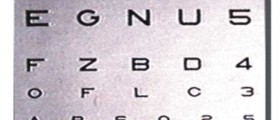Blurred vision and dizziness are two symptoms of many illnesses. They may occur separately or together, and if they affect the patients at the same time, along with other symptoms and signs, it may point to the presence of certain diseases.
Dizziness generally refers to an unpleasant sensation of unsteadiness and imbalance. Blurry vision is a symptom of loss of sharpness of vision.

- Dizziness has a prevalence of between 20% and 30% in the elderly population and 20–25% in those of working age. Since documentation of dizziness relies on self-report by the patient, these figures may be underestimated due to inaccurate recall (as with falls), differing definitions of dizziness and the exclusion of people with cognitive decline.
- Dizziness has many different causes. Among these are vestibular disease, which has been found to be a contributing factor in around a third of cases and vascular disease, accounting for between 14% and 57% of cases, depending on the population being studied. Often, it is not possible to identify a single source for the problem as dizziness is frequently multifactorial and dizziness has been proposed as a geriatric syndrome.
- Medline, CINAHL, AMED, Web of Science and The Cochrane Library were searched with keywords chosen to find articles which investigated the causes of dizziness and considered vision as a possible trigger. Citation chaining of all included papers was performed in addition to the hand searching of all reference lists. Unpublished literature was identified using www.opengrey.eu. The review considered studies involving adults which link, measure or attempt to improve any aspect of vision in relation to dizziness.
- Nine thousand six hundred and eighty one possible references were found, and the abstracts were screened independently by two reviewers to determine if they should be included in the study. Thirteen papers were found which investigated whether dizziness was linked to an assessment of vision. Visual impairment measures were crude and typically self-report, or Snellen visual acuity with little or no measurement details. Five studies found an independent link between dizziness and vision, five found a weak association (typically finding a link when univariate analyses were used, but not when multivariate analyses were used), and three found no association.
- Studies finding a strong link were usually cross-sectional with a large study population whereas those finding a weak association had relatively small numbers of participants. Studies which did not find an association used a broad definition of dizziness that included the term light-headedness, an unreliable Rosenbaum near visual acuity chart or an unusual categorisation of visual acuity.
Some Causes of Blurred Vision and Dizziness
Many medical conditions are associated with the occurrence of blurred vision and dizziness. Migraines, changes in blood pressure, and Meniere's disease are some of them.
Migraines are a severe form of headache which typically affects one half of the head. They tend to linger and are generally accompanied by nausea and vomiting. They may be induced by stress or certain foods. Before the very attack of the migraine, a person may experience a so-called aura, a warning set of signs. Aura includes visual disturbances and increased sensitivity to light. Blurred vision can be one of the features of the aura, while dizziness can be one of the characteristics of the very migraine attack.
Changes in blood pressure are always accompanied by certain symptoms. This happens in both cases, the elevation in blood pressure and the drop in blood pressure. Both of the conditions may cause blurred vision and dizziness at the same time. However, these symptoms are more common for a drop in blood pressure. Blurred vision and dizziness are, for example, typical for orthostatic hypotension. This type of hypotension can occur when one stands up too quickly.
Meniere's disease is another cause of blurred vision and dizziness. The condition develops as a consequence of changes in fluid within the ear. Apart from blurred vision and dizziness patients suffering from Meniere's disease also suffer from tinnitus, hearing loss, fatigue, and discomfort.
Treatment for Blurred Vision and Dizziness
Before any kind of treatment, a person should consult a doctor who will perform physical and neurological exams and additional tests and eventually set the correct diagnosis. Only then the most suitable treatment can be prescribed.
- opto.ca/eye-health-library/sudden-blurred-vision
- www.aao.org/eye-health/symptoms/blurriness-2
- Photo courtesy of Karl Doege by Wikimedia Commons: commons.wikimedia.org/wiki/File:BlurryDavid.jpg

















Your thoughts on this
Loading...